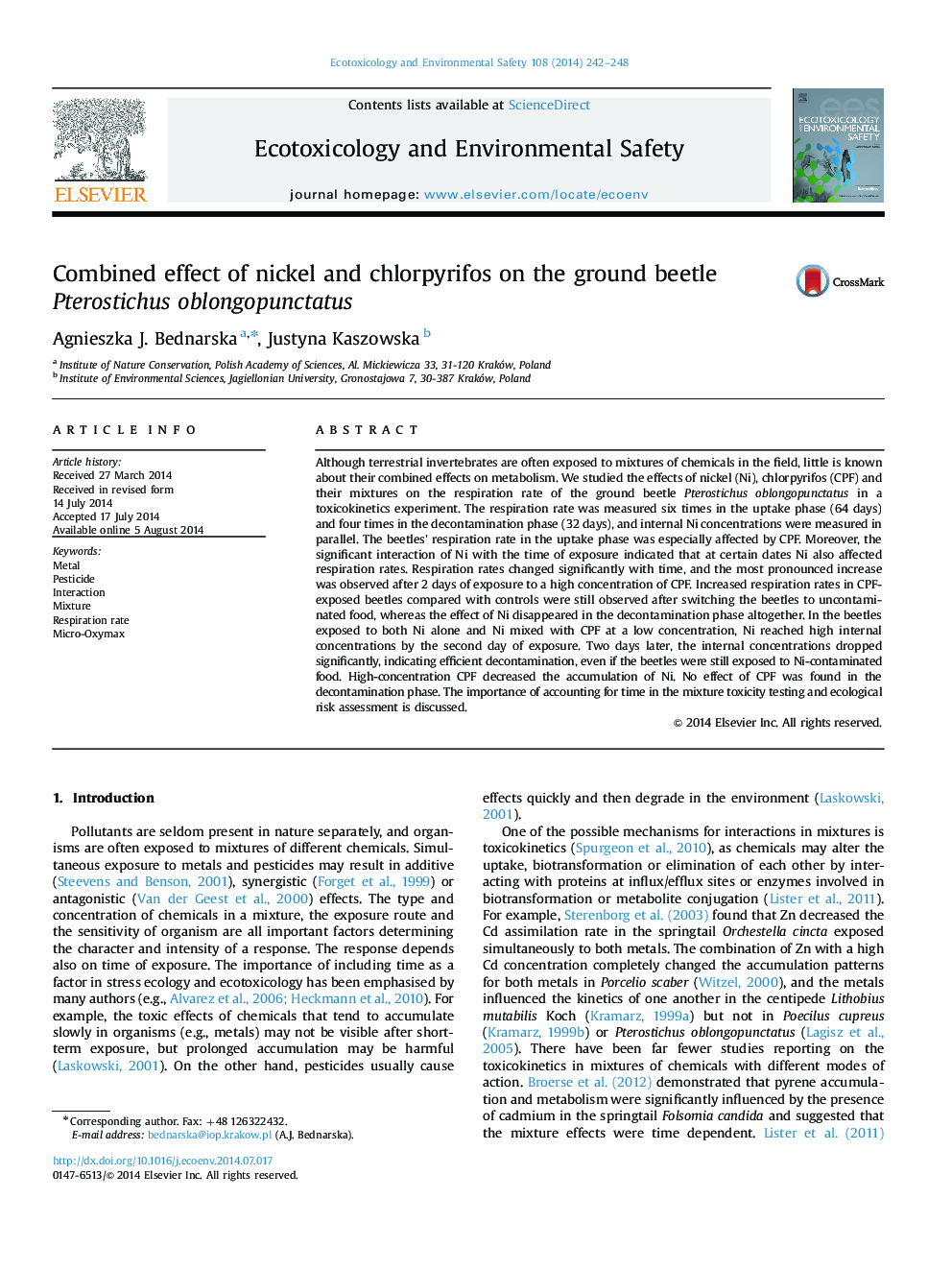| Article ID | Journal | Published Year | Pages | File Type |
|---|---|---|---|---|
| 4420088 | Ecotoxicology and Environmental Safety | 2014 | 7 Pages |
•Ni and chlorpyrifos effects on metabolism were studied in toxicokinetics experiment.•The beetles׳ respiration rate was especially affected by chlorpyrifos.•High-concentration of chlorpyrifos decreased the accumulation of Ni.•No chlorpyrifos effect on Ni kinetics was found in the decontamination phase.
Although terrestrial invertebrates are often exposed to mixtures of chemicals in the field, little is known about their combined effects on metabolism. We studied the effects of nickel (Ni), chlorpyrifos (CPF) and their mixtures on the respiration rate of the ground beetle Pterostichus oblongopunctatus in a toxicokinetics experiment. The respiration rate was measured six times in the uptake phase (64 days) and four times in the decontamination phase (32 days), and internal Ni concentrations were measured in parallel. The beetles׳ respiration rate in the uptake phase was especially affected by CPF. Moreover, the significant interaction of Ni with the time of exposure indicated that at certain dates Ni also affected respiration rates. Respiration rates changed significantly with time, and the most pronounced increase was observed after 2 days of exposure to a high concentration of CPF. Increased respiration rates in CPF-exposed beetles compared with controls were still observed after switching the beetles to uncontaminated food, whereas the effect of Ni disappeared in the decontamination phase altogether. In the beetles exposed to both Ni alone and Ni mixed with CPF at a low concentration, Ni reached high internal concentrations by the second day of exposure. Two days later, the internal concentrations dropped significantly, indicating efficient decontamination, even if the beetles were still exposed to Ni-contaminated food. High-concentration CPF decreased the accumulation of Ni. No effect of CPF was found in the decontamination phase. The importance of accounting for time in the mixture toxicity testing and ecological risk assessment is discussed.
